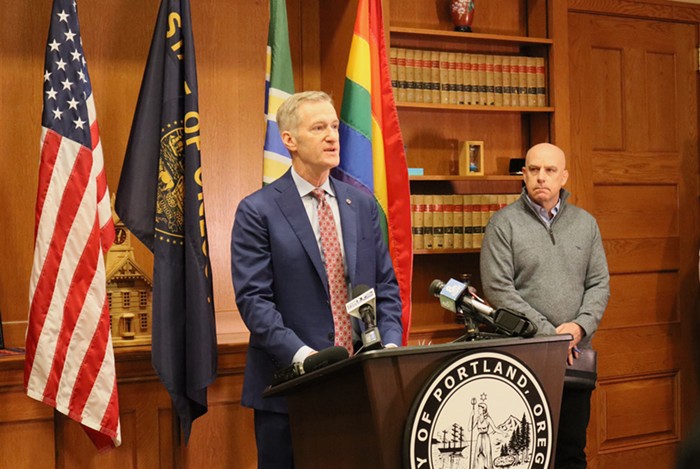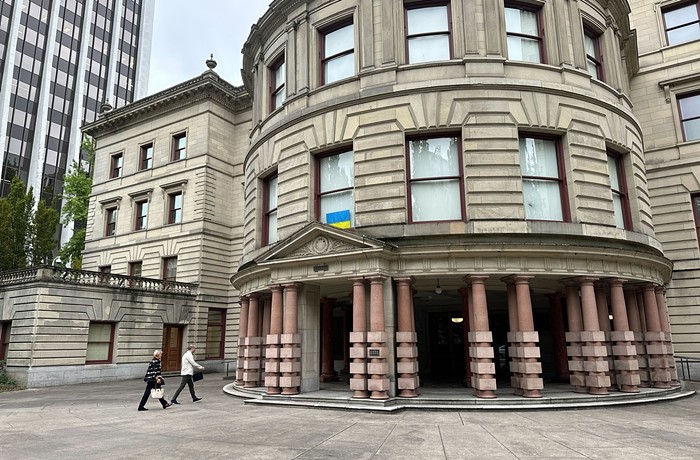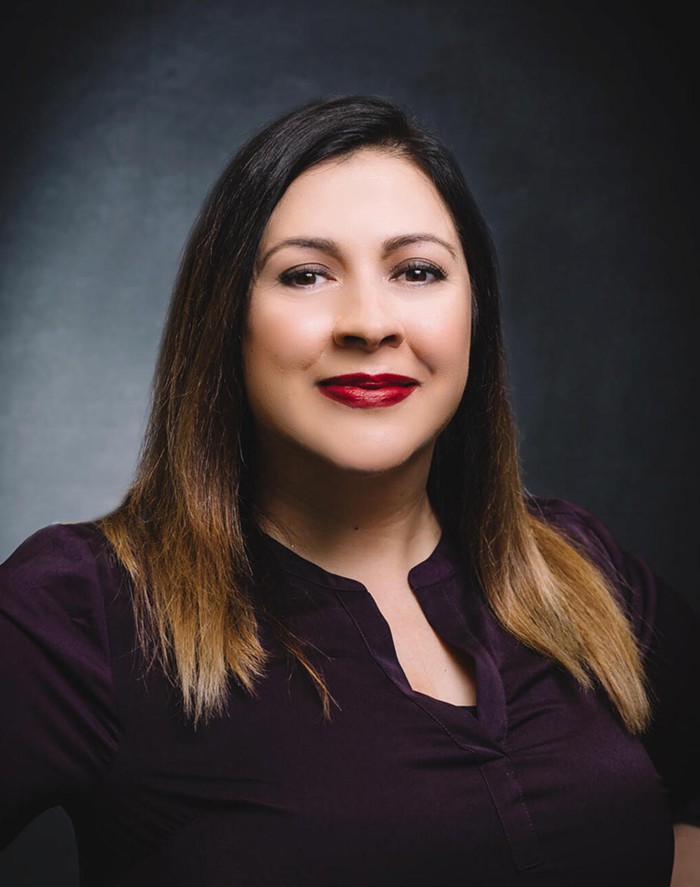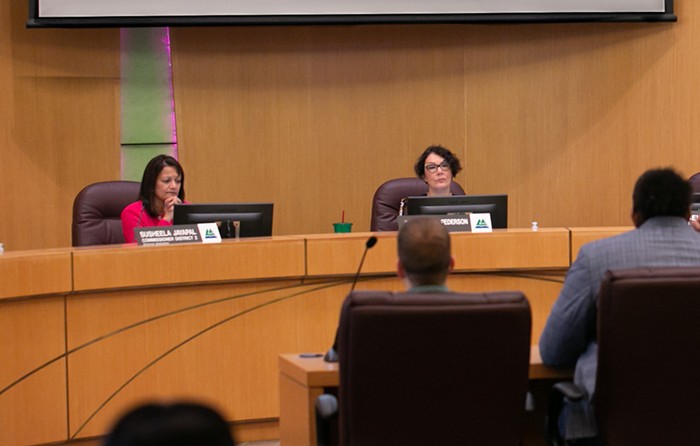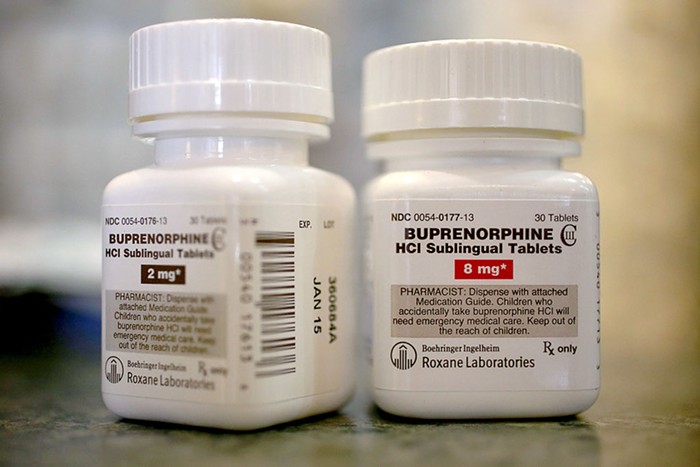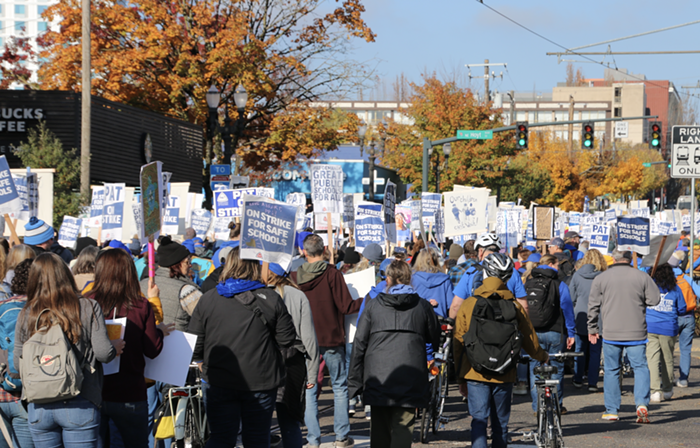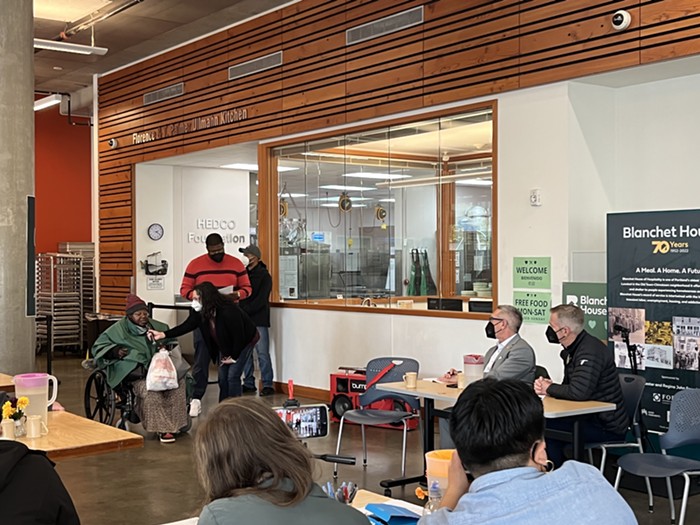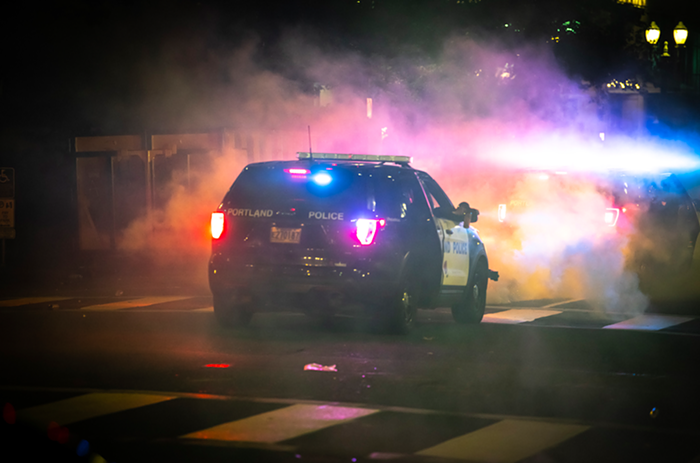
Last summer, during the height of the city's racial justice protests, City Commissioner Jo Ann Hardesty asked Mayor Ted Wheeler to allow her to oversee the Portland Police Bureau (PPB), a position that Wheeler held at the time. Her call went unanswered. Instead, at the beginning of 2021, Wheeler handed Hardesty the reins of a very different city bureau: The Portland Bureau of Transportation (PBOT).
Yet, during her first six months leading the bureau, Hardesty has taken the same passion for equity and community safety she advocates for in policing and applied it to the city’s transportation system.
As PBOT commissioner, Hardesty has three major goals for the agency: addressing high crash corridors and pedestrian safety, finding sustainable funding streams for the bureau, and creating community spaces through projects like the Rose Quarter freeway expansion and car-free plazas. We take a look at what she's achieved thus far below.
Transportation Safety and High Crash Corridors
Traffic deaths in Portland have been on the rise for the past decade—there were 24 traffic deaths in 2010, meanwhile 26 people have already died in traffic accidents in 2021 alone.
Many of those deaths and other traffic accidents occur on PBOT’s high-crash streets and intersections—30 streets and 30 intersections where more than half of the city’s traffic deaths occur. Of those 30 high-crash intersections, 28 are located in East Portland, where Hardesty lives. Because she doesn’t drive, Hardesty is also familiar with navigating car-centric streets as a pedestrian.
“I know how dangerous it is as a pedestrian to walk the street after dark in East Portland,” Hardesty said.
Transportation safety advocates have been calling for safety investments in East Portland for decades. While the city and state have invested in several safety and pedestrian-centered projects over the years, advocates often consider the investments to only serve as Band-Aids to major infrastructure problems that need expensive overhauls.
That changed in June when, after years of community pressure, local and state transportation agencies agreed to transfer ownership of 82nd Ave. from Oregon Department of Transportation (ODOT) to PBOT.

Portland’s bustling 82nd Ave. is actually a state-owned freeway that the expanding city has grown to surround, creating a disconnect between the way 82nd Ave. was built—a long, straight corridor with wide lanes that allow for higher speeds—and the way it is used by the community—as a neighborhood thoroughfare that people cross while walking their kids to school. The street has significant potholes and has needed repairs for a long time. While repairing 82nd Ave. has been on ODOT’s backlogged to-do list for a while, the state transportation agency has prioritized investments in roadways used by the most people, like Interstate-5, over regional streets, leaving the timeline for repairs on 82nd Ave. in limbo.
With the jurisdictional transfer comes a $150 million investment from the state to repair the street and change its infrastructure to cater more towards pedestrians, public transit, and other forms of transportation. PBOT is also chipping in $35 million towards the project. The repairs, which were approved less than a month after two pedestrians were killed by drivers on 82nd Ave. in a two-week span, are expected to drastically reduce the number of traffic-caused fatalities along 82nd.
Hardesty celebrated the transfer as a success. She attributes the major investment to the region having representative leadership.
“It really shows that representation matters, and having people elected in East Portland really advocating,” Hardesty said, referencing both her position and state Rep. Khanh Pham, who also lives in East Portland and helped coordinate the transfer. “We had to do this, it’s really one of those things that really had to happen. So I think having, unfortunately, two seniors die back-to-back was the final catalyst to get all the right people at the right table at the right time.”
Hardesty hopes to use this momentum to address other East Portland streets that are owned by ODOT, like outer SE Powell.
“What we need is the state to mandate that if ODOT is not going to maintain these roads, that they develop a path to turn those roads over to local communities, with the resources to maintain and put them up to standard,” Hardesty said.
Pham, the state representative, could be an ally for Hardesty in that effort.
"Commissioner Hardesty knows what it's like to be a pedestrian and transit-dependent in East Portland,” Pham said in a statement to the Mercury. “Having her leadership and strong advocacy has been critical to making sure the urgent need for jurisdictional transfer of 82nd Ave moves from a dream to reality.”
Local advocates have also expressed appreciation for Hardesty’s commitment to trusting the most impacted communities to help develop their own solutions to transportation problems like traffic safety.
“I know how dangerous it is as a pedestrian to walk the street after dark in East Portland.”
“Commissioner Hardesty brings a unique lived experience that too few of our decision-makers share: as a renter from East Portland trying to access downtown and the rest of the region without driving, she understands the lack of equity, access, and safety in our current system and is working hard within community to transform it for the better,” said Sarah Iannarone, the director of The Street Trust, a local transportation safety and equity advocacy organization.
Iannarone, who ran against Wheeler in the November 2020 mayoral election on a platform centered on transportation equity, praised Hardesty’s leadership in the transfer of 82nd Ave. Iannarone also applauded Hardesty’s work to secure $450,000 from the city budget in June to start immediate pedestrian safety improvements, like installing more safety cameras that record vehicles’ speed, adding rubber bumps to the road that slow down left-turning vehicles at high-crash intersections, and lowering speed limits in high-crash areas.
PBOT’s Bicycle Advisory Committee (BAC) has also found an ally in Hardesty, pleased with her vision of creating car-free spaces in Portland through the city’s Safe Streets initiative that has created nine public plazas—car-free streets that host community events—this summer. Hardesty wants to make those plazas permanent and expand them all over the city, but she has yet to introduce a city ordinance needed to do so.
In a May meeting with commissioner, however, the BAC members critiqued Hardesty for her lack of awareness of Portland’s Bicycle Plan for 2030, a plan developed in 2010 that envisioned turning Portland into a “world class bicycling city” by 2030. When discussing how to make bicycling more equitable during the meeting, Hardesty noted many Black Portlanders don’t feel safe traveling outside of a car because they are nearly three times as likely to die from a traffic fatality than their white counterparts. The BAC members advocated for protected bike lanes that would keep bicyclists safer, but Hardesty was clear that her first priority was slowing down cars to mitigate pedestrian deaths first.

During the meeting, a couple BAC members said they felt PBOT’s projects were car-centric and that pedestrian safety efforts were being “shortchanged.” When Hardesty disagreed with the committee, one person loudly interjected, asking “why do we continue to have pedestrians die on our streets?”
The committee sent a letter to Hardesty in July apologizing for their conduct during the meeting and promising to add more people of color to their committee, but still pushed hard for the commissioner to make greater strides in adding bike infrastructure to city streets. According to some advocates, the biking community’s vision for Portland fits neatly with Hardesty’s existing goals.
David Stein, a longtime bike advocate and chairman of the BAC, said Hardesty’s vision for addressing pedestrian safety and developing car-free spaces is “congruent with a future where more Portlanders are comfortable using a bike to get to work, run errands, or just explore.”
“This is a vision that I want to see manifest,” said Stein, who stressed that he was speaking as a bike advocate, not on behalf of the BAC. “While we may not agree on everything, as an advocate, she has been receptive and supportive.”
Many of Hardesty’s safety goals align with PBOT’s Vision Zero program, which aims to end traffic fatalities and major traffic-caused injuries in the city by 2025. While the program has led efforts to slow down cars and boost walking conditions—like lowering the speed limit in most residential areas from 25 to 20 mph in 2018—traffic deaths have continued to rise and the city seems further away from achieving its safety goals than when the project began in 2015.
“The challenge is that when we started Vision Zero we actually had less cars on the street than we have today,” Hardesty said. “As automobile traffic continues to rise, that’s when climate mitigation becomes so vital to an urban transportation system.”
Hardesty sees part of her job as getting people out of their cars and onto public transit or bikes, both for traffic safety and climate action. As PBOT commissioner during a time of intense climate change-fueled extreme weather events—like a record-breaking heat wave happening only six months after a record-breaking ice storm—one of Hardesty’s challenges is leading the transportation bureau toward a greener future. She hopes to do that by reducing the bureaus reliance on fossil fuels.
“As automobile traffic continues to rise, that’s when climate mitigation becomes so vital to an urban transportation system.”
Transitioning to Green Transportation
“When I got PBOT, I was shocked to learn that our two biggest funding mechanisms [are] parking garage fees and [the] gas tax—the two things we don't want people using a lot of,” Hardesty said.
In hopes of pushing Portland towards a greener transportation future, Hardesty directed PBOT to develop new funding ideas that reduce the bureau’s dependency on fossil fuels. The agency is still in the early process of coming up with new funding streams, according to Hardesty, but she predicts PBOT will start developing more concrete ideas in September.
“What I know is that a lot of entities use our streets for their own profit, and yet don't pay anything into the maintenance and upkeep of our streets,” Hardesty said. “I have a $5 billion maintenance backlog in PBOT and it is because of those kinds of situations. We have not in fact figured out how to maintain our infrastructure.”
In addition to finding sustainable funding sources for PBOT maintenance, Hardesty hopes to leverage the White House’s infrastructure investments to secure resources for transportation safety projects, particularly in low-income and racially diverse areas of the city.
Hardesty is also looking to TriMet to play a more collaborative role in working with PBOT to reach regional climate goals. While the transit agency has its own goal of running a zero-emissions bus fleet by 2040, Hardesty anticipates bigger changes under the direction of TriMet’s new general manager, Sam Desue Jr.

“I’m hoping with Sam at the helm, he’s going to be much more forward thinking than TriMet has been in the past,” Hardesty said. “I'm really excited about the potential because we are partners in this region, and we need TriMet to be more visionary in their thinking.”
According to Hardesty, a “visionary” TriMet would include the agency being more present in conversations around Portland’s growth, as well as investing in transit projects that will still be considered climate-conscious in 50 years’ time.
Hardesty is currently pushing for a high speed bus line—like the FX service on Division Street—on 82nd Ave., since the street’s 72 bus line is TriMet’s most used line.
“I am thinking about what a green energy transportation future looks like, and how do we make sure that we're mitigating the climate catastrophe that's headed our way,” Hardesty said.
Rose Quarter Expansion
The Interstate-5 Rose Quarter Expansions Project has been limping along for the past decade, facing opposition from a variety of community organizations. Opponents include environmental advocacy group No More Freeways, Portland Public School Board members who don’t want to expansion to encroach on Harriet Tubman Middle School, and Albina Vision Trust (AVT)—a group advocating for the investment in and prosperity of the Albina neighborhood bisected by I-5.
The original construction of the freeway corridor in the late 1960s destroyed Black-owned homes and sliced the neighborhood in two, creating massive economic and cultural losses. AVT wants ODOT to use the expansion project to return some of that land back to the Black community by building freeway caps over I-5 where new sections of the neighborhood can be built.
In order for AVT’s vision of new apartment buildings and community-centers overtop the freeway to come true, ODOT has to build robust freeway caps that can support multi-level buildings. City Hall’s previous PBOT commissioner, Chloe Eudaly, pulled PBOT’s support from the project after ODOT declined to include freeway caps that can support more than three-story buildings in the project design.
In order for ODOT to win back PBOT’s support, Hardesty wants ODOT to make at least two concessions on the project.
“First, we would absolutely have to have a plan to move Harriet Tubman Middle School,” Hardesty said. “We cannot continue to subject those kids to higher levels of pollution that’s exacerbated by both the construction project and the development that would radically increase air pollution for those kids and families.”
Governor Kate Brown also supports relocating the middle school, regardless of the freeway expansion, because of the air pollution the students are exposed to. ODOT is currently exploring expanding the freeway in the opposite direction of the school and has previously said that the cost of relocating the school is not ODOT’s responsibility. Environmental advocates say that a significant change to the design of the project—like shifting the expansion in the opposite direction—would trigger the need for a new federal review of the environmental impacts of the transportation project. That review could delay the project’s goal of starting construction by the end of 2023.

Some Black community members and contractors who are counting on construction jobs from the I-5 project fear a significant change in the design will trigger a delay in the project. The massive construction project has been promised to Raimore Construction, a Black-owned contractor, but representatives are worried that the funding for the expansion will be moved to a “shovel ready” project if construction is delayed, leading to a lost opportunity to create generational wealth in the Black community.
Hardesty wants to see a larger commitment to job creation for Black Portlanders in the project as a whole. That’s her second request to ODOT.
“When we’re doing the Rose Quarter project, we should provide as much opportunity for economic development so that the Albina community, which has been destroyed by I-5, can be refitted,” Hardesty said. “And then, ensuring that Black, Indigenous, and other people of color truly benefit from this project, not just the construction jobs but from what’s left when the construction jobs are done.”
Hardesty believes ODOT has intentionally created conflict in the Black community by seemingly holding the promise of construction jobs over the community’s head, while blaming AVT for delaying the project timeline. Hardesty says the tactic is being used in order for ODOT to push through a project design that fits the department’s needs and wants, instead of the community’s.
“ODOT is doing exactly what it always does: It comes into town with an idea of what should be built, and will not actually listen to the community experts who will have to live with the project ODOT has built,” Hardesty said. “The issue isn’t whether the Albina Vision project is a good one or not a good one, or whether Raimore Construction will or will not lose their subcontracts if what ODOT wants to push forward is adopted. The issue is really who determines the destiny of a community—and it certainly isn’t the Oregon Department of Transportation.”
Similar to AVT, Hardesty believes ODOT should return land to the Albina community through freeway caps that are placed in a land trust or given to the community using public-private partnerships. ODOT is currently waiting on an independent assessment on freeway cap designs before unveiling its latest plan.
AVT Executive Director Winta Yohannes says the organization is grateful for Hardesty’s focus on not just building transportation systems that meet Portland’s current needs, but also accounting for the city’s needs 50 years from now.
“It takes a lot of political leadership to take transportation into the future and that's what we’re seeing from Commissioner Hardesty,” Yohannes said.
AVT has been asking ODOT to return land to the community through the Rose Quarter expansion for over four years, but Yohannes said it was only recently that she’s grown more optimistic the project will actually invest in the Albina neighborhood. That optimism can’t be exclusively attributed to Hardesty’s advocacy—there has been a recent alignment of Metro, city, and county leadership to support returning land back to the Black community, as well as a federal campaign to address racist infrastructure projects like the original I-5 corridor across the country. But, Yohannes said, Hardesty has made a point of using her political position to uplift the values of the communities most impacted by the issue. No More Freeways organizer Aaron Brown agrees.

"Commissioner Hardesty has time and again demonstrated an eagerness to listen to community advocates pushing for racial justice, climate action and more equitable transportation investments,” No More Freeways organizer Aaron Brown said in a statement to the Mercury. “No More Freeways is hopeful the Commissioner will maintain her steadfast commitment to holding ODOT accountable to these shared goals.”
Hardesty says she is firm in her demands from ODOT and the Rose Quarter project, especially since ODOT needs PBOT’s cooperation to actually begin construction on the project.
“ODOT cannot do this project without support of the City of Portland and from the other local governments,” Hardesty said. “They have no path forward without our support.”
Hardesty said part of her learning curve with PBOT has been realizing how long it takes to move a transportation project from concept to reality. But, she is committed to continuously engaging with all of the relevant stakeholders throughout that process.
“I've been here long enough to know that everything is about relationships,” Hardesty said, emphasizing the importance of forming relationships with transportation agencies, public transit, and communities, and considering their needs not just equally, but equitably. “My goal is to [understand] how can I be a champion for the things [transportation agencies] need, while at the same time continuing to champion for the things I know my community needs.”


